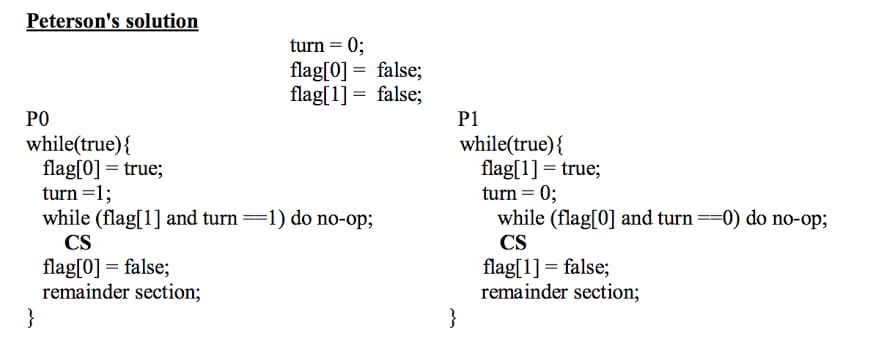What is Peterson's Solution?
Peterson's solution is a classic solution to the critical section problem. The critical section problem ensures that no two processes change or modify a resource's value simultaneously.
There are three sections except for the critical sections: the entry section,exit section, and the remainder section.
The process entering the critical region must pass the entry region in which they request entry to the critical section.
The process exiting the critical section must pass the exit region.
The remaining code left after execution is in the remainder section.

Advantages of Peterson's Solution
- Simplicity: Peterson's solution is a simple algorithm that is easy to implement and understand. It does not require complex hardware or specialized software to work.
- Efficiency: Peterson's solution is a lightweight algorithm that does not consume much system resources. It does not require busy waiting, which helps in saving CPU cycles.
- Fairness: Peterson's solution provides fair access to the critical section. It ensures that every process gets a turn to enter the critical section and avoids starvation.
Disadvantages of Peterson's Solution
- Limited scalability: Peterson's solution is not scalable to a large number of processes. It is only suitable for small systems with a limited number of concurrent processes.
- Busy waiting: Although Peterson's solution does not use busy waiting, it still involves a lot of spinning in a loop, which can waste CPU cycles.
- Possibility of race conditions: Peterson's solution can lead to race conditions if not implemented correctly. This can cause synchronization problems and lead to unpredictable behavior in the system.
- Limited to two processes: Peterson's solution can only be used for systems with two processes. It cannot be extended to support more than two processes.